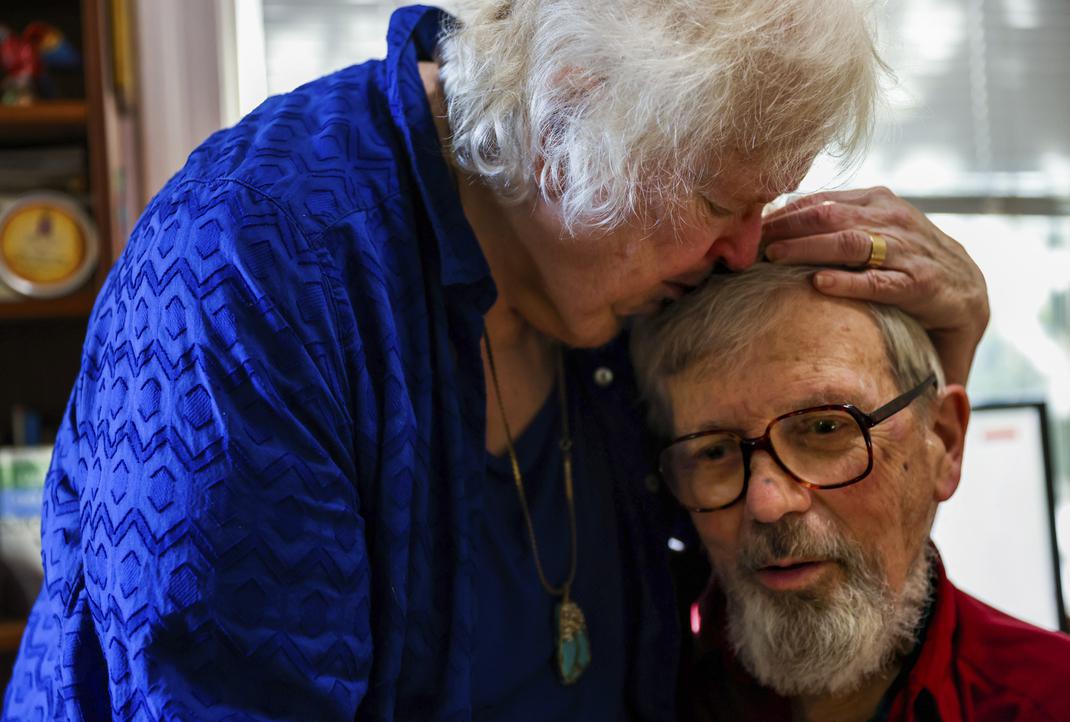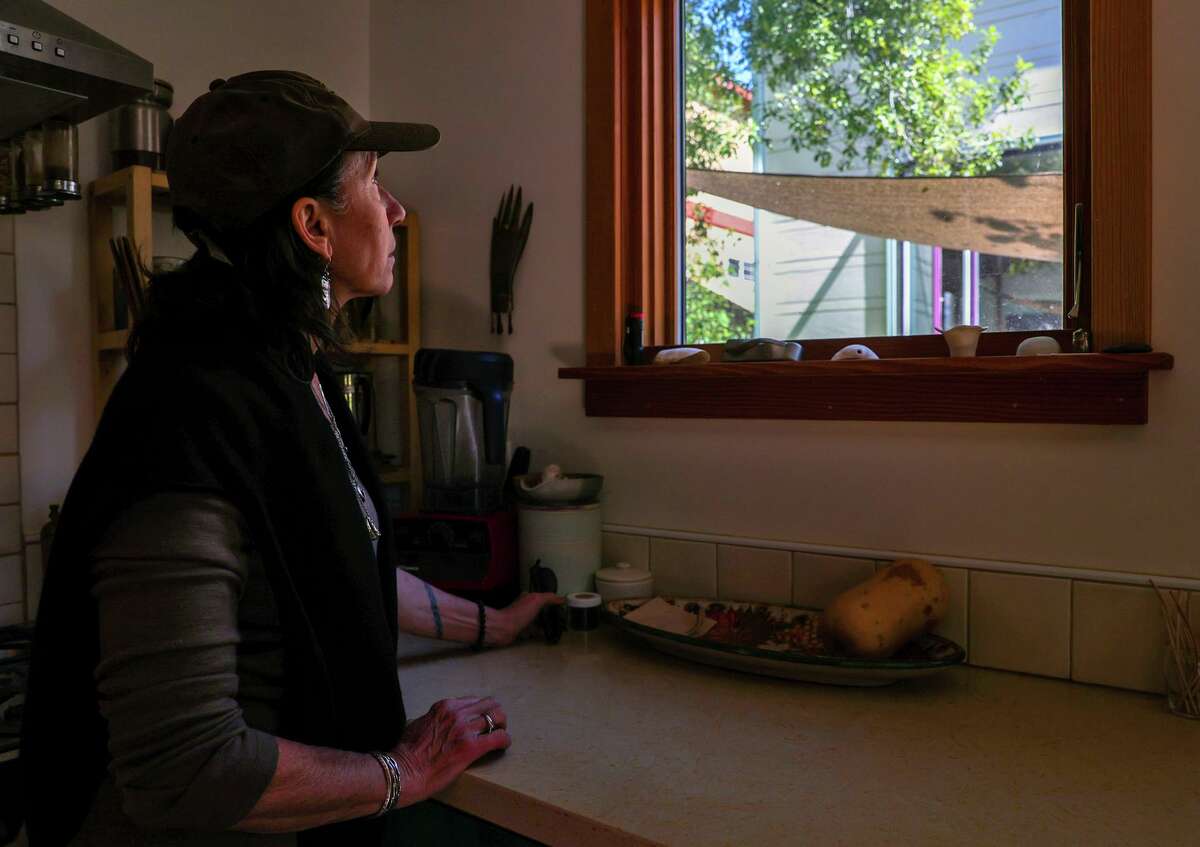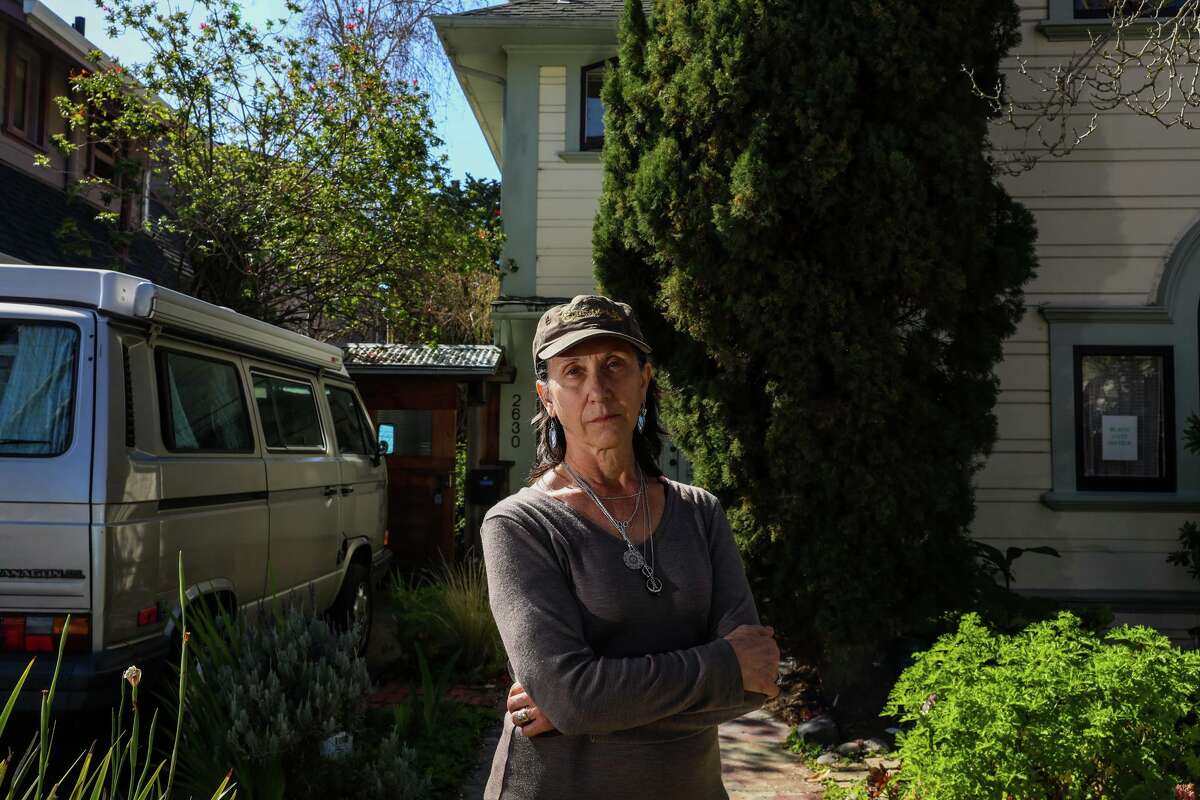The housing crisis is pushing both Bay Area landlords and tenants to the financial brink – San Francisco Chronicle

In a quiet corner of Oakland, Pat McHenry Sullivan agonizes over taking out a life insurance loan to pay off rent debt for her and her husband, who lives with dementia.
A few miles north in Berkeley, Susan Marchionna is in the reverse predicament: She’s debating selling her house of four decades after a drawn-out dispute with a tenant who she says in state filings has not paid rent since the fall.
As a renter and a landlord, McHenry Sullivan and Marchionna are on opposite ends of California’s two-year effort to prevent a pandemic eviction crisis. But both are still waiting for answers to months-old applications for $5.2 billion in statewide rent relief — two of thousands of Bay Area residents unsure where to turn as local eviction battles intensify and a March 31 deadline looms for a final layer of emergency state rental programs.
“I’ve been sitting here since early December with everything in limbo,” said McHenry Sullivan, 79. “It’s heartbreaking, and it’s exhausting.”
The tension playing out in living rooms, city halls and county eviction courts follows an unprecedented expansion of America’s housing safety net. First there were broad local, state and federal eviction bans, most of which expired in California last fall. Then came the multibillion-dollar statewide rent relief effort, designed to accept applications and shield those still waiting for approval from eviction through March 2022.
With that deadline fast approaching and politicians so far unresponsive to tenant advocates’ calls for another extension, renters and small landlords report widespread confusion and fear about falling through the cracks. Only a fraction of relief funds has been paid out, fueling concerns that indebted renters will be pushed out of the region or end up homeless.
Susan Marchionna holds an undated family photo. Her three children were raised in the Berkeley home she now rents out, and Marchionna has twice been widowed by husbands who died in the house.
Yalonda M. James/The Chronicle
The situation is even more complicated in McHenry Sullivan and Marchionna’s home county of Alameda, where stronger local eviction bans haven’t prevented messy eviction disputes.
Now, as landlord and tenant groups battle over the future of renter protections, both sides warn that housing could get harder to find as property owners — fed up with California’s piecemeal approach to rent relief and evictions — take rentals off the market or raise income requirements in a bid to insulate themselves from future tenant disputes.
One thing’s increasingly clear: Even in a swath of the East Bay with some of the nation’s strongest protections for renters, there’s no escaping the turmoil redrawing the map of where people can afford to live.
A renter’s exit plan
Until the fall, McHenry Sullivan thought she would be able to keep paying $1,426 a month for the Glenview two-bedroom that she and her husband, John, 82, have rented since 2006. But then the author and speaker’s extended unemployment benefits ended, and the pandemic didn’t. Medical equipment, taxi fare to doctor’s appointments and the countless hours McHenry Sullivan spends caring for her husband and their home, limiting her ability to pursue outside work, all added financial pressure.
September 2021 was the last month the couple paid rent on time. To cover the rent for October, the final payment they’ve made, McHenry Sullivan said she was forced to dip into a life insurance policy, leaving less money for her or her husband if widowed.
McHenry Sullivan has a master’s degree and is comfortable enough with computers to have run her own business for years, but she was stymied by Oakland’s rent relief website, which she said repeatedly malfunctioned when she tried to apply in the fall. She called politicians and ventured to San Francisco for help from one of the few housing clinics offering in-person assistance, then was told to apply for a state program instead. In December, after months of fruitless calls to check her application status, she was told to reapply to the city program.
She’s still waiting for answers.
“Nobody ever responded,” McHenry Sullivan said. “Nobody.”
Tenant advocates say the odyssey through California’s maze of state and local rent relief programs isn’t uncommon for Bay Area renters looking for help. Cities and counties including Oakland, Marin and Sonoma opted to run their own rent relief programs instead of routing all residents to the bigger state program Housing Is Key. Several local programs have already stopped accepting new applications or run out of money, though more federal funding may become available in the coming months.

Susan Marchionna looks at her Berkeley house, which she’s rented out to long-term tenants for the past four years, from the granny unit where she lives in the backyard. She’s considering selling the house while she waits for answers from a state rent relief program for a tenant who has not paid rent in several months.
Yalonda M. James/The Chronicle
Gauging how many renters like McHenry Sullivan have applied for relief but not heard back is hard to do, since state, county and city programs all report data separately. In Alameda County alone, there are four rent relief programs.
Statewide, the California Department of Housing and Community Development reports that more than $2.2 billion in rent relief has been paid to around 40% of the 468,314 households that have applied. But in a report last week, tenant advocates at the National Equity Atlas who did their own analysis of state data contended that only 16% of applicants have received the promised funds.
“We’re trying to make sure we’re helping more people, but the issues still stand,” said Maria Miranda, whose team at Concord nonprofit Monument Impact has helped 1,400 tenants apply for rent relief since April. “There are still people getting eviction notices, being retaliated against in some situations, or being harassed or intimidated.”
With state lawmakers declining to further intervene on pandemic evictions, the uncertainty is pushing tenant advocates in Bay Area suburbs to lobby for permanent new renter protections. At a March 7 city meeting in Concord, a housing committee advanced an anti-harassment measure that would bolster rights for tenant unions and enact financial penalties for landlords who threaten or retaliate against tenants, or who fail to maintain homes.
Landlord groups argued that the measure is overly broad. Homeowner and District 5 City Council candidate Laura Nakamura was among those urging officials to “take it very seriously” that many renters who spoke in support of the measure were single mothers and others struggling to get by.
“We have to ask ourselves,” Nakamura said, “who benefits from this ordinance, and who is burdened by it?”
For now, McHenry Sullivan is thankful that her Oakland landlord has been cooperative. But she and her husband have decided that staying in the Bay Area isn’t sustainable. They’re planning a cross-country move to be with family in Shenandoah, Va.
Before they can start over, McHenry Sullivan knows she has to clear some $7,000 in rent debt amassed in the past six months.
“We’re going to pay it off,” she said, “one way or another.”
A landlord’s last option
Back in the early 1980s, Marchionna was skeptical about giving up Bernal Hill to buy her first house in Berkeley with her husband and their young child. She grew to love the 1906 redwood-frame Edwardian nestled between campus and West Berkeley’s commercial corridors. She gave birth to two children in second-floor bedrooms, loved and lost two husbands who died in the home, and in recent years rebuilt a career there as a part-time editor for a museum.
It was a decade ago, Marchionna said, after her children had moved out and she was looking for extra income, that she started renting out spare rooms on Airbnb. The constant churn became a pain, and she knew the housing crisis was getting worse. So four years ago, she rented the house to a long-term tenant and moved into a 280-square-foot backyard tiny home.
Things went well at first, with the $4,500-a-month rent allowing her to easily pay the mortgage after a few refinancings. But then Marchionna’s job was eliminated by pandemic budget cuts, and her long-term tenant moved out in the fall.
That left a roommate who last year signed a declaration sent to Marchionna saying that he was unable to pay rent due to the pandemic, leaving her to apply for $17,500 in rent relief in January. The rent debt, plus her monthly mortgage and expenses like a $4,500 roof repair bill, have left her looking for a way out.
“My kids have all moved away. I lost my job,” Marchionna told The Chronicle. “All I have is my house.”

Susan Marchionna at her Berkeley home of four decades, which she’s considering selling to escape a drawn-out dispute with a tenant. As the statewide rent relief deadline looms, landlord-tenant disputes are sparking over delays in aid.
Yalonda M. James/The Chronicle
While Marchionna consults with real estate agents, landlord groups contend that some tenants are abusing eviction protections meant to shield vulnerable renters. National Equity Atlas estimates show that 721,000 California renters still owed some $3.3 billion in back rent as of January, but many state rent relief programs rely on renters to self-attest that it was the pandemic that prevented them from paying.
Tenant advocates call cases of alleged squatting outliers. They say that those historically at highest risk of displacement are single mothers, fixed-income seniors and Black or Latino service workers. While landlords may be forced into financial hardship to deal with legal fees, they argue that the stakes are higher for tenants who are less likely to have legal representation and may be left with nowhere to live if evicted.
To Marchionna, the result is that individual property owners like her are left to clean up messy interpersonal disputes in cities where housing shortages have been building for decades.
“The city of Berkeley is trying to get individual homeowners to help solve the housing crisis,” she said, “then demonizing all landlords.”
Real estate listing sites estimate that Marchionna’s home could be worth some $1.3 million. She said agents have advised that the sale price could be significantly reduced if a tenant is still living in the home. It’s a stalemate that has left her regretting ever getting into the rental business, and especially trying to be flexible with would-be tenants.
“I’m the kind of landlord you want to find,” Marchionna said, “and I never want to do it again.”
Lauren Hepler is a San Francisco Chronicle staff writer. Email: lauren.hepler@sfchronicle.com Twitter: @lahepler




